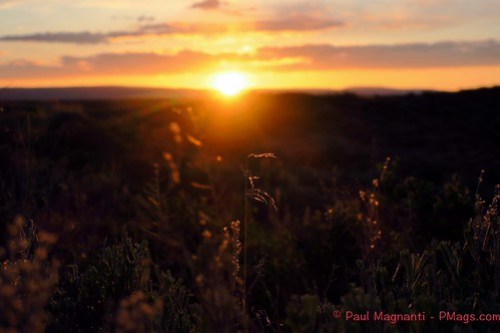Ten years ago, I walked across The Great Divide Basin of Wyoming. A part of the Red Desert.
Since then, I’ve driven across it to and from other places. Or even purposely explored the outer edges of it while on a road trip.
I’ve always said that perhaps the best way to appreciate this space is not to backpack through it.
But to perhaps take short hikes.
And to simply sit in the middle of it all.
To take it all in and contemplate the vast and wide spaces.
To smell the sage. Hear the birds call their evening songs. And to watch the sunset slowly fade into the night sky.
This past weekend, we went to the western edge of the Red Desert and explored a Wilderness Study Area.
With the wet spring, the area was teeming with wildlife. The plants were lush and blooming. And the austere rocks stood out among the green grass in addition to the pink, yellow and purple flowers.

It was not a weekend of high miles. It was short strolls and taking photos. And sitting. And listening. And just observing.
And it was wonderful.

Off the highway. And into the wide open spaces.
Once we left I-80, we’d enter into a different world.
A world that again makes me ask the question: What is wildness?
There were dirt roads of various conditions. And apparent signs of gas exploration.
But we saw perhaps ten people, all in cars or on some distant ATVs when we were out there.
We had the canyons to ourselves. Our camp was lonely and isolated, and no one was in sight.

Overland Stage marker. A spur of the famous Oregon Trail.
It is not an area where humans feel welcome at first.

Remnants of an old 1860s stage stop. Ft. La Clede, a 1860s fort, is also very close by.
But the Red Desert abounds with life.

Wild horse.

Pronghorn
The wide open spaces aren’t boring. They are beautiful.


We drove the roads and parked when I thought it would be safer and more efficient to walk rather than drive.
We entered a Wilderness Study Area. Anywhere else and these canyons, hoodoos and rock formations would a be a tourist attraction.
Instead, it was just us walking among the rocks and into the canyon. Some ATVers were seen in the distance. And being a WSA, the only way to really see the area was walking.


We walked back on the rutted clay roads. Roads that would be challenging in wet weather.

For now, it was a pleasant walk.
We found an excellent spot for camp. Isolated. On a road good enough to drive even if it became wet and surrounded by some low buttes and hills.
Being a long weekend, and car camping, I indulged a bit with some culinary treats.

After dinner, we did what I thought would be the best way to enjoy the area: We sat. And watched. And listened.
The bird songs were amazing. Some burrowing owls could distinctly be heard if not seen.
Soon, the sun set. Nothing to do but watch and enjoy.

Nothing more needed to be said.

It was beautiful.

The following day, we drove a short bit. Parked and walked.
We soon saw a herd of over two dozen wild horses.


A half hour or so later, we came up to the rim of a different part of the WSA.
The only word I can think of to describe it: Stupendous.

A deep canyon. Tucked away deep in sagebrush country. And on a holiday weekend, we had it ourselves. The poor conditions of the latter part of the road and the need to walk kept most away I suspect.

A special place for us only it seemed this day.

Some weather moved in. I became nervous.

Though I was conservative in where I parked, there were a few places back to camp that had me worried.
We walked quickly. We slipped along the way. In the now wet clay roads, even with 4WD, we slipped once I started driving. I engaged 4WD low. We had a close call, but I had flashbacks to driving in the wet snow of my native New England. I calmly reversed, gunned it and made it out of a potentially ugly situation.
We made it back to camp.
I was thankful I read the weather correctly and hustled. Thankful I was conservative in how far I drove up the road. And thankful that the rest of the roads, until we made the highway would be in good condition (relatively speaking).
We again simply enjoyed the day turning into evening. We enjoyed the sky above.
The following morning we drove to an abandoned ranch.
Hard to tell when it was abandoned as the debris was from mixed eras. But it does show how harsh this area can be at times.

We took one last look back as we drove out.

The antelope bid us farewell.

And a few hours later we were home.
No traffic. No congestion. No crowds.
Just the vast and open spaces.
And a beauty we had all to ourselves.

That’s close to where I spent several years growing up (just south of the Utah-Wyoming line). I learned to drive on bottomless clay roads like those you show!
I strongly suspect your first wild horse was a recent escapee; he had a plucked tail (done on most ranch horses) instead of the long flowing tail of an “uncivilized” horse.
I loved all the photos!
Thanks!
I learned to drive in black ice and wet snow..oddly enough those lessons helped me in the slick mud.
Your theory about the first horse may be correct. That horse was by itself. The second batch of horses was part of a herd of at least 30+ horses!